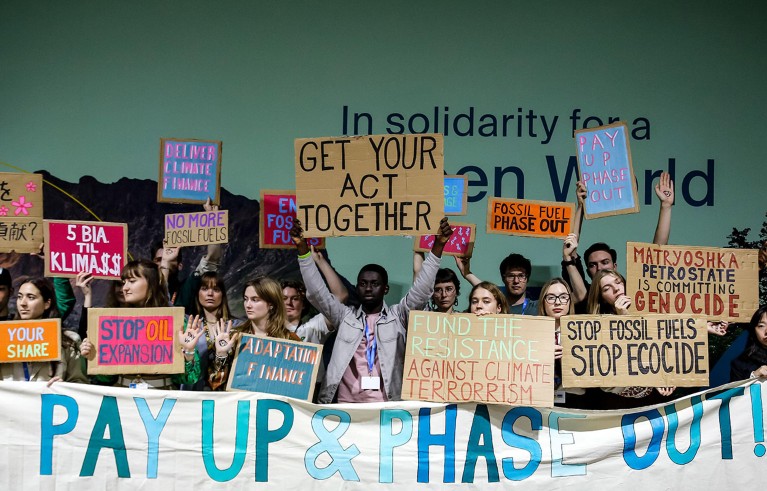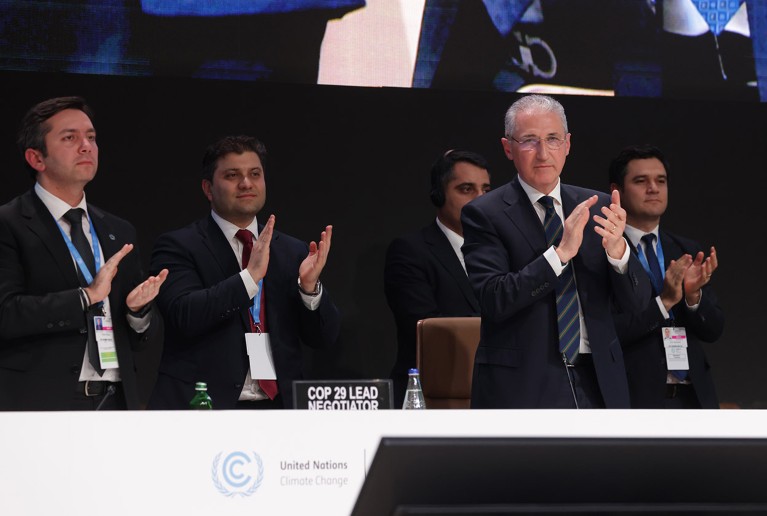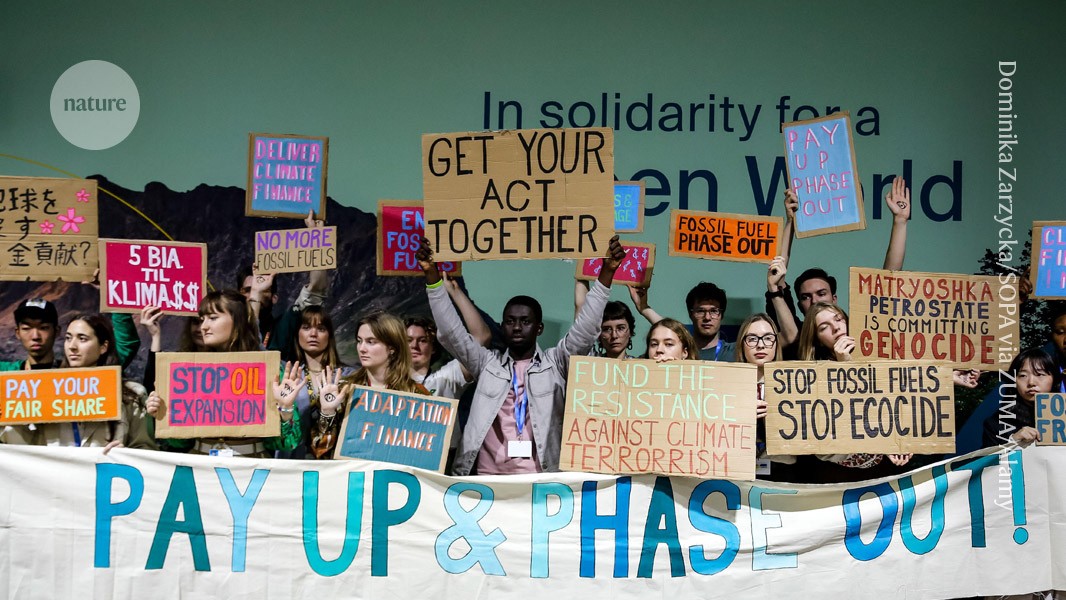
Activists protest during at the COP29 climate meeting in Baku.Credit: Dominika Zarzycka/SOPA via ZUMA/Alamy
A last-minute deal that rescued the COP29 climate talks in Baku, Azerbaijan, is a “fragile consensus”, researchers who study climate finance have told Nature.
Visibly relieved COP delegates from rich countries applauded in the early hours of 24 November following a last-minute pledge in which rich countries will ‘take the lead’ in increasing climate finance to poor countries to at least $300 billion annually by 2035. Low-and middle income countries, notably China, will be expected to contribute to international climate funds, a first for a COP agreement.
But delegates from some of the largest developing countries, including India, Indonesia and Nigeria were furious. Some alleged that they had been pressured into a deal, so that the COP meeting did not end in failure. The meeting also did not agree how much of the $300 billion is to be in grants versus loans, nor how much will come from private or public-sector sources.
Current climate finance from rich to poor countries is more than $100 billion and projected to double to nearly $200 billion by 2030 under a ‘business as usual’ scenario, according to an analysis by ODI Global, a think tank in London.
Old wounds
“The finance outcome for Baku was deeply disappointing,” says Dipak Dasgupta, an economist at The Energy and Resources think-tank in New Delhi, and a lead author on climate finance for reports assembled by the Intergovernmental Panel on Climate Change.
“While snatching this COP back from the flames deserves momentary celebration, getting here also exposed old wounds between wealthier and poorer nations,” notes Clare Shakya, head of climate at The Nature Conservancy, an international conservation organization headquartered in Arlington, Virginia, in the United States.

COP29 President Mukhtar Babayev (right, front) applauds the end of the UNFCCC climate conference in the early hours of 24 November after the climate-finance deal was made.Credit: Sean Gallup/Getty
Low-and-middle income countries, excluding China, approached the COP proposing to rich countries that they need around $2.4 trillion annually from 2030 to help wean them off fossil fuels and to protect them from the effects of global warming. This sum is in line with the recommendations from an influential report from scientists and economists that was presented at the COP. To get closer to a deal during the COP, more than 80 countries proposed a figure of $1.3 trillion.
“The pledge of $300 billion a year by 2035 will not convince anyone that we will get to $1.3 trillion a year needed by developing countries to respond to the climate emergency,” says Sarah Colenbrander, head of climate and sustainability at ODI Global.
The Trump factor
The agreed amount also does not reflect a scenario in which the United States retracts its global climate funding if an incoming Trump administration pulls out of international climate agreements.
Before the COP, US President Joe Biden’s administration was committed to providing $11.4 billion in climate finance each year by 2024, around 10% of the present annual global total. “There is no doubt that we will see a massive hole in the global climate finance provided [by the US] just as climate impacts are intensifying and accumulating,” says Shakya. By contrast, China has been providing around $4 billion annually in climate finance since 2013, she adds.
COP delegates also agreed that a finance “road map” document will be prepared ahead of COP30 in Belém, Brazil. This would show how countries will achieve the higher climate finance target.
“The Baku to Belém road map is there for good reason and good practical science is urgent,” Dasgupta says.” It needs careful nurturing, and not a wrecking ball.”


